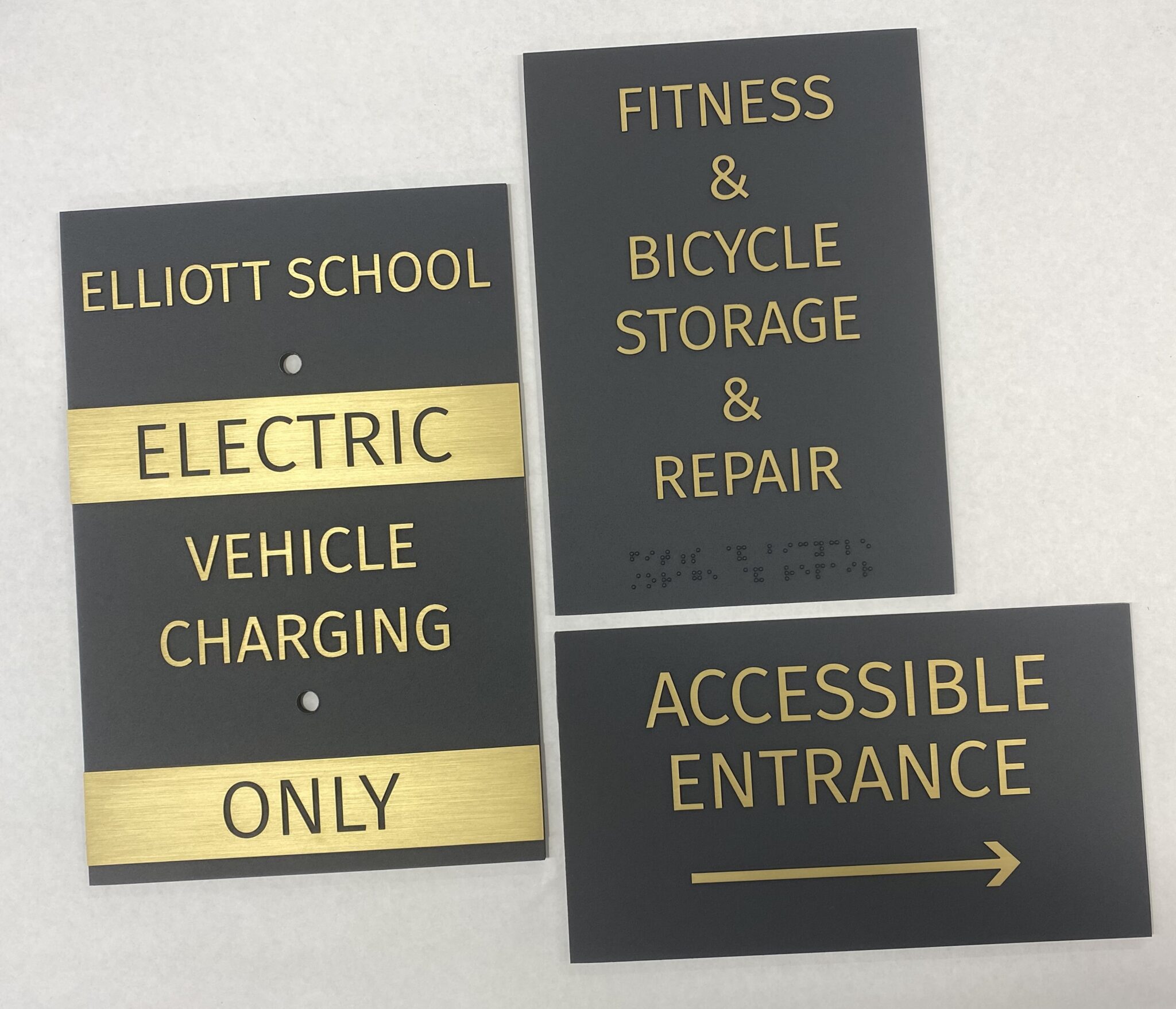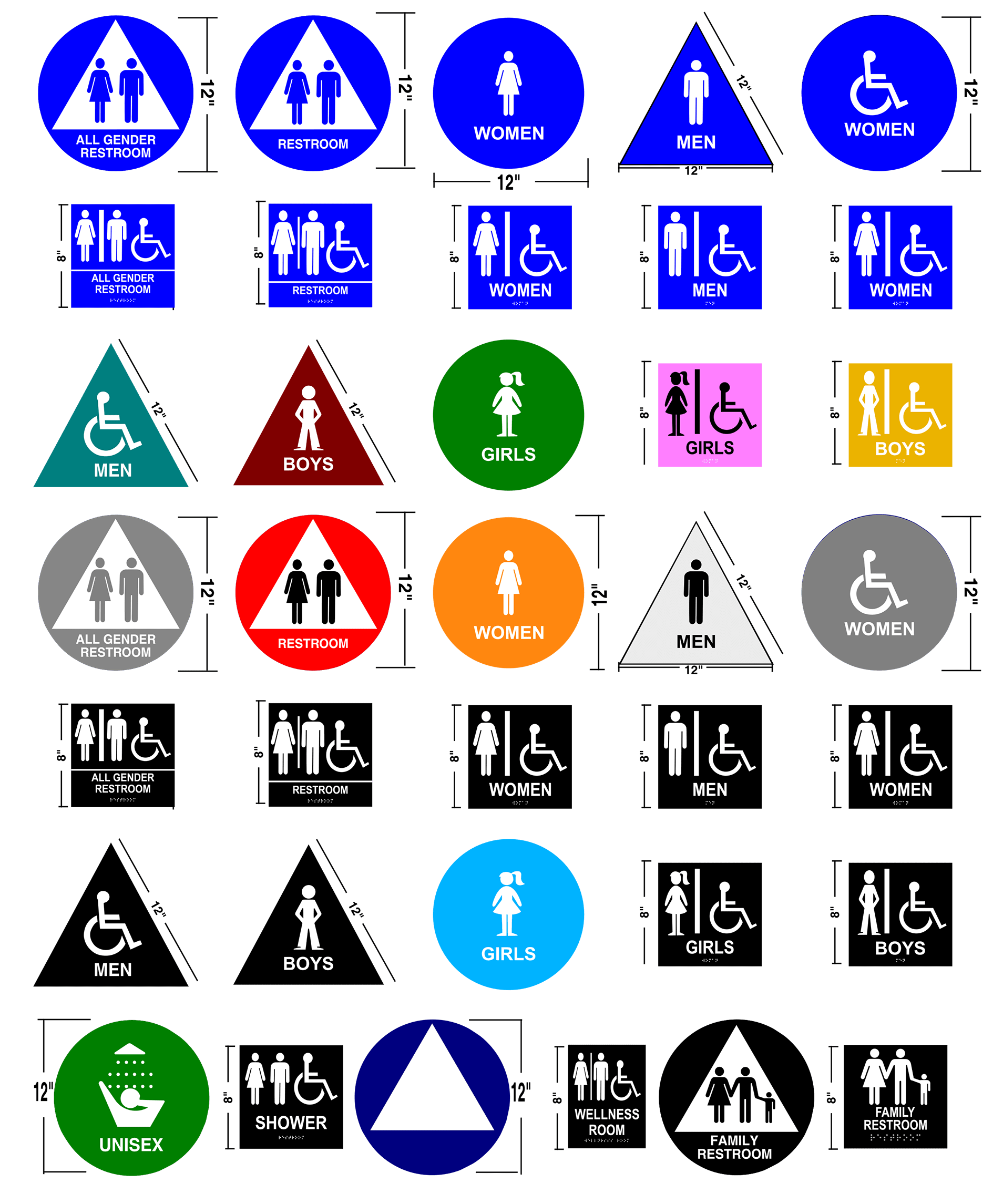Discover the Importance of ADA Signs in Public Spaces
Discover the Importance of ADA Signs in Public Spaces
Blog Article
Exploring the Secret Features of ADA Indications for Enhanced Ease Of Access
In the world of ease of access, ADA signs offer as silent yet effective allies, making sure that areas are comprehensive and accessible for people with impairments. By integrating Braille and tactile components, these signs break barriers for the aesthetically damaged, while high-contrast shade systems and understandable fonts cater to varied visual requirements.
Relevance of ADA Conformity
Guaranteeing compliance with the Americans with Disabilities Act (ADA) is critical for cultivating inclusivity and equivalent access in public rooms and workplaces. The ADA, enacted in 1990, mandates that all public centers, employers, and transport solutions fit people with impairments, ensuring they enjoy the same civil liberties and possibilities as others. Compliance with ADA requirements not just satisfies lawful commitments but likewise improves an organization's reputation by showing its dedication to diversity and inclusivity.
One of the essential facets of ADA conformity is the execution of obtainable signage. ADA indicators are made to guarantee that individuals with impairments can easily navigate via areas and structures. These indications need to follow specific standards relating to dimension, font, color comparison, and positioning to guarantee visibility and readability for all. Effectively executed ADA signage aids remove barriers that individuals with specials needs typically run into, therefore advertising their independence and confidence (ADA Signs).
Moreover, sticking to ADA policies can minimize the danger of legal effects and prospective penalties. Organizations that fail to abide by ADA guidelines may encounter legal actions or fines, which can be both economically difficult and destructive to their public photo. Therefore, ADA conformity is important to promoting an equitable setting for everyone.
Braille and Tactile Components
The incorporation of Braille and responsive aspects right into ADA signage personifies the principles of ease of access and inclusivity. These features are vital for individuals that are blind or visually impaired, allowing them to browse public spaces with higher freedom and self-confidence. Braille, a tactile writing system, is essential in giving written details in a format that can be easily perceived via touch. It is typically placed beneath the corresponding text on signage to make sure that individuals can access the info without visual aid.
Responsive aspects expand past Braille and consist of raised characters and symbols. These elements are designed to be discernible by touch, enabling individuals to determine area numbers, restrooms, leaves, and other essential areas. The ADA sets certain standards pertaining to the size, spacing, and positioning of these responsive aspects to maximize readability and guarantee uniformity throughout different settings.

High-Contrast Color Pattern
High-contrast color design play a pivotal role in enhancing the exposure and readability of ADA signs for individuals with visual problems. These plans are crucial as they take full advantage of the distinction in light reflectance in between message and background, guaranteeing that indicators are easily noticeable, also from a range. The Americans with Disabilities Act (ADA) mandates the usage of specific shade contrasts to suit those with limited vision, making it a crucial aspect of compliance.
The effectiveness of high-contrast shades depends on their capability to stand apart in different lighting problems, consisting of poorly lit environments and locations with glare. Generally, dark text on a light history or light text on a dark history is utilized to attain ideal comparison. Black message on a yellow or white history provides a stark visual difference that assists in quick recognition and understanding.

Legible Fonts and Text Dimension
When considering the layout of ADA signage, the selection of legible fonts and appropriate text dimension can not be overstated. These elements are crucial for making sure that signs are obtainable to individuals with aesthetic impairments. The Americans with Disabilities Act (ADA) mandates that fonts have to be not italic and sans-serif, oblique, script, highly attractive, or of uncommon type. These requirements aid make sure that the message is quickly legible from a range which the personalities are appreciable to varied audiences.
The size of the message additionally plays a crucial function in availability. According to ADA standards, the minimal text elevation must be 5/8 inch, and it ought to raise proportionally with viewing distance. This is especially crucial in public spaces where signage needs to be reviewed rapidly and precisely. Uniformity in message size adds to a cohesive visual experience, assisting people in navigating settings efficiently.
Moreover, spacing in websites between letters and lines is essential you could try here to legibility. Appropriate spacing protects against personalities from showing up crowded, boosting readability. By sticking to these standards, developers can significantly improve accessibility, making sure that signs serves its designated function for all people, no matter their aesthetic abilities.
Effective Positioning Techniques
Strategic positioning of ADA signs is necessary for making the most of ease of access and making sure compliance with legal criteria. ADA standards state that indications ought to be placed at a height between 48 to 60 inches from the ground to guarantee they are within the line of view for both standing and seated people.
In addition, signs need to be put beside the lock side of doors to enable very easy recognition before entry. This positioning helps people situate areas and rooms without blockage. In cases where there is no door, signs should be positioned on the closest nearby wall. Uniformity in indication placement throughout a center boosts predictability, decreasing confusion and boosting overall individual experience.

Conclusion
ADA indicators play an important role in promoting ease of access by incorporating functions that attend to the demands of people with impairments. These aspects jointly foster an inclusive atmosphere, underscoring the significance of ADA compliance in ensuring equal access for all.
In the realm of accessibility, ADA indicators serve as quiet yet effective allies, making sure that spaces are navigable and comprehensive for individuals with disabilities. The ADA, passed in 1990, mandates that all public facilities, companies, and transport solutions suit individuals with handicaps, ensuring they appreciate the exact same civil liberties and chances as others. ADA Signs. ADA signs are created to guarantee that people with disabilities can easily navigate with structures and rooms. ADA guidelines stipulate that signs should be mounted at an elevation in between 48 to 60 inches from the ground to ensure they are within the line of view for both standing and seated people.ADA signs play a crucial duty index in advertising accessibility by incorporating features that deal with the demands of people with specials needs
Report this page